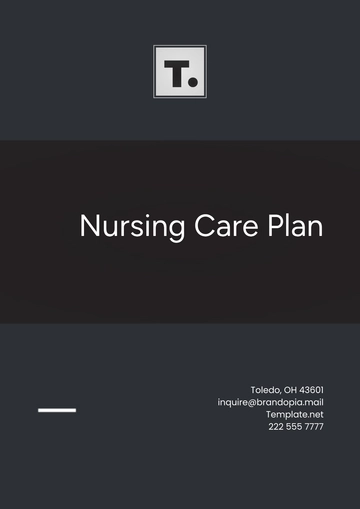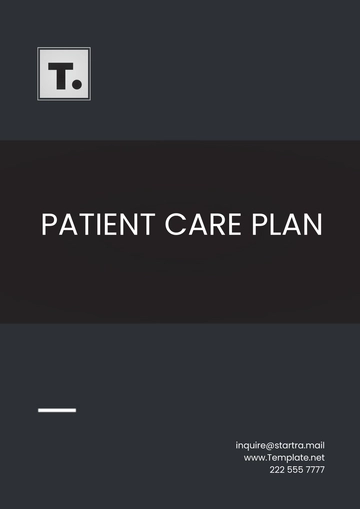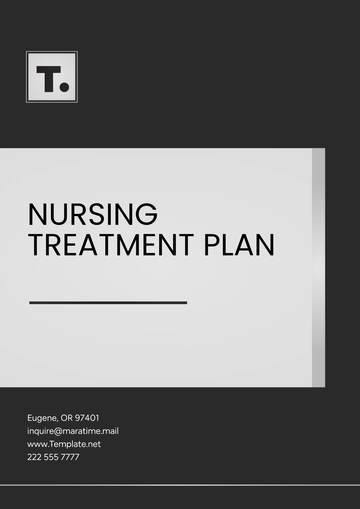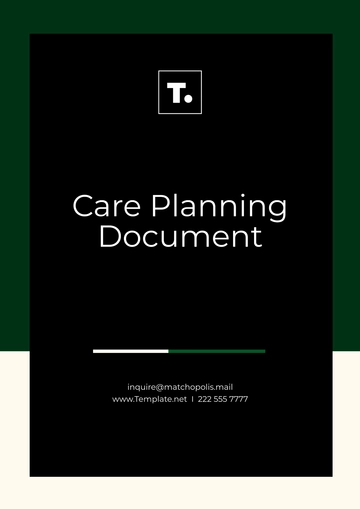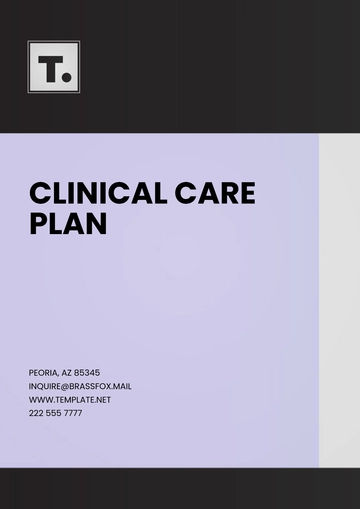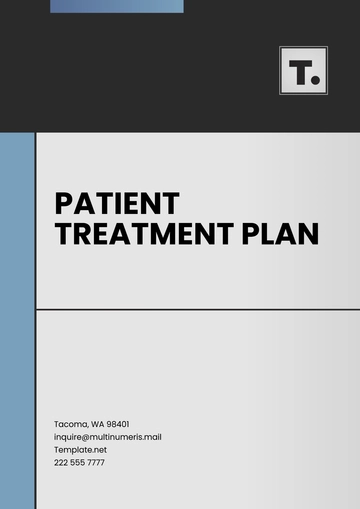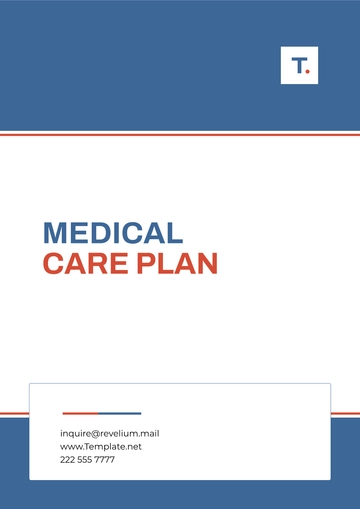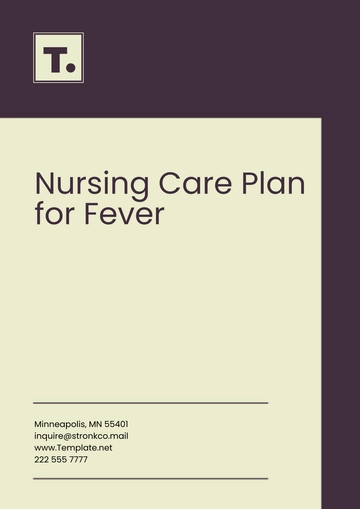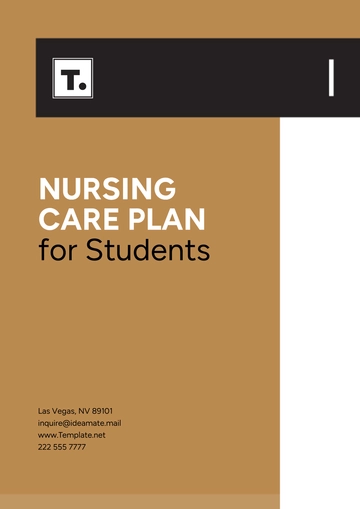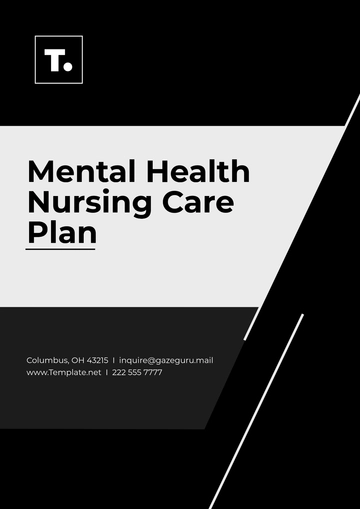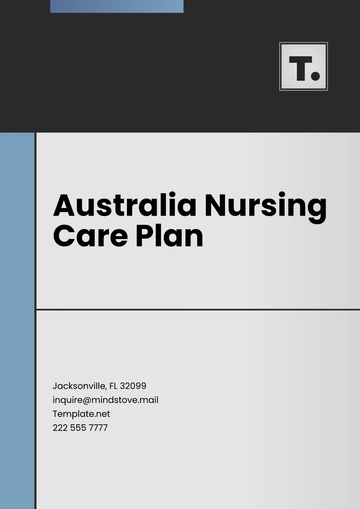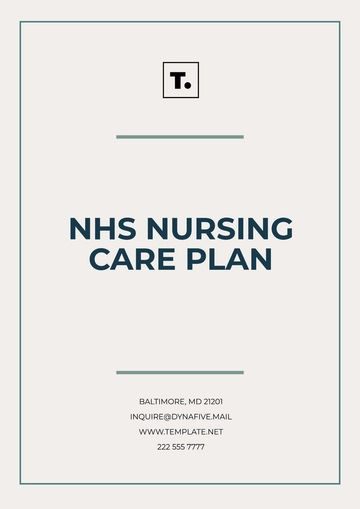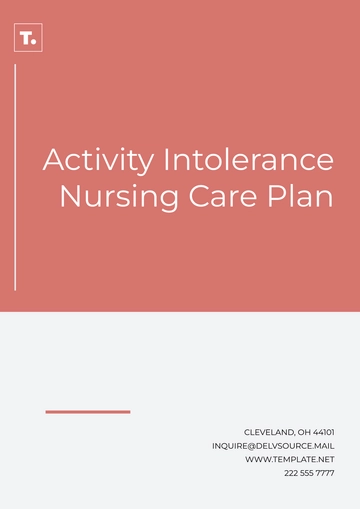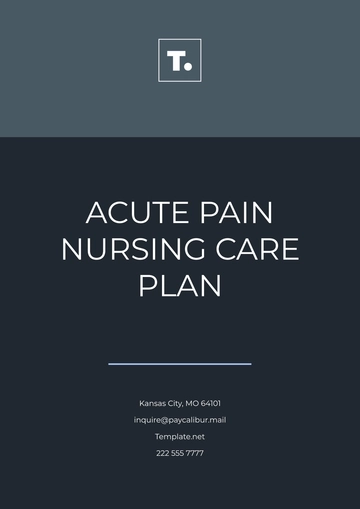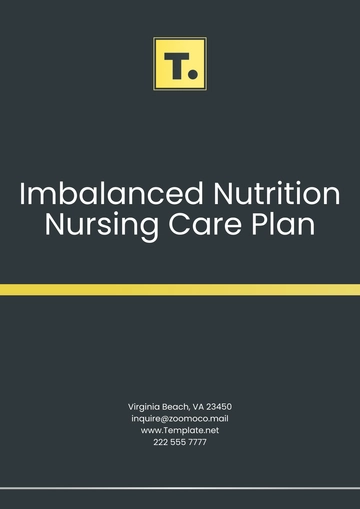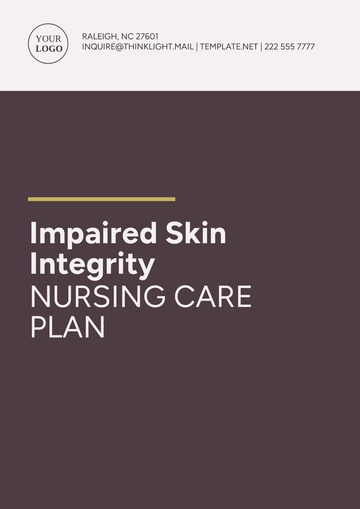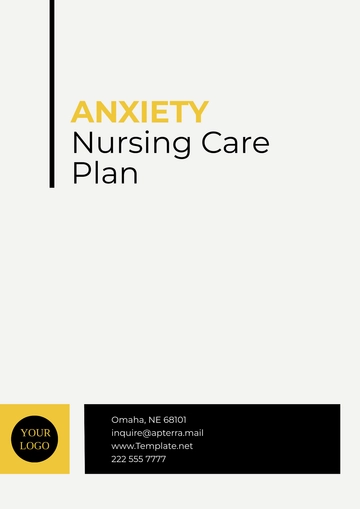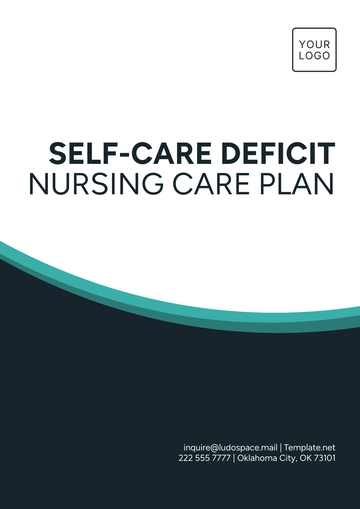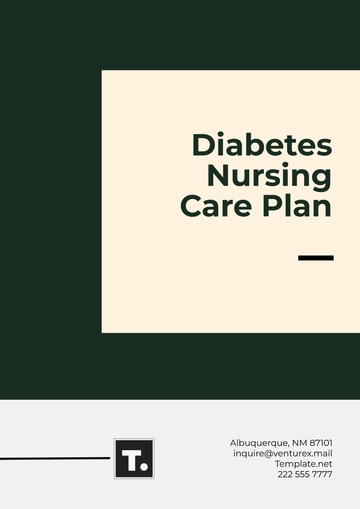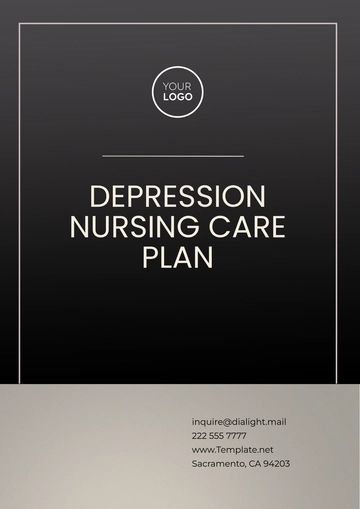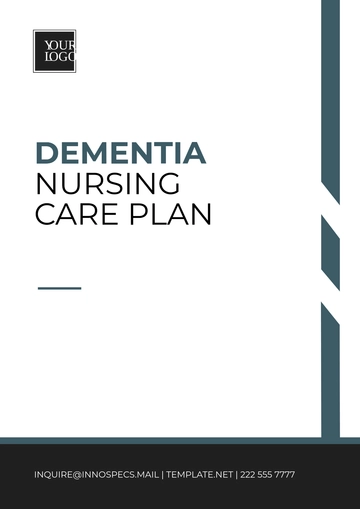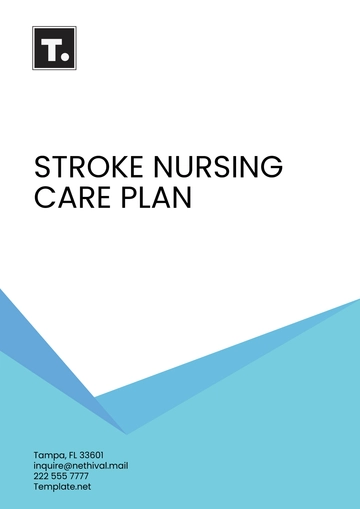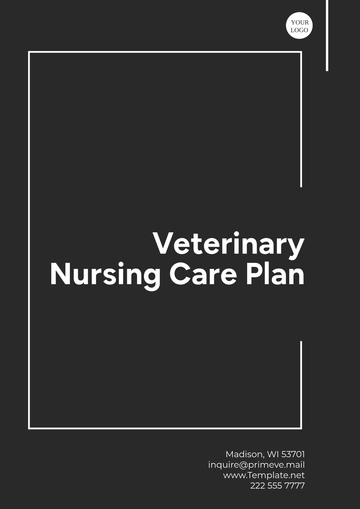Free Anxiety Nursing Care Plan
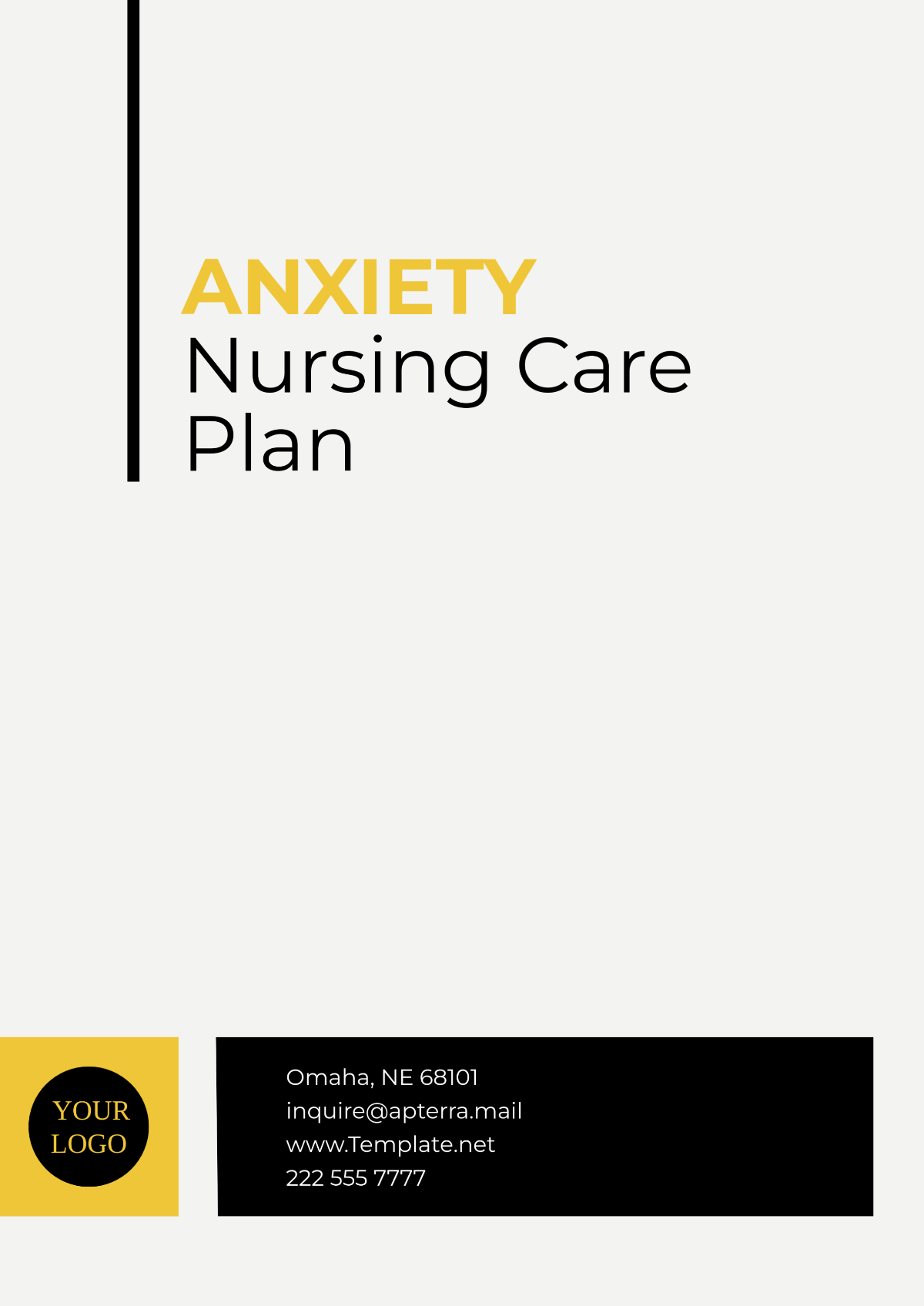
Prepared by: [YOUR NAME]
[YOUR EMAIL]
Patient Information
Name: Jeremy Marvin
Age: 36
Gender: Male
Date of Admission: January 15, 2050
Primary Diagnosis: Generalized Anxiety Disorder (GAD)
Assessment
Assessment Data | Symptoms/ Findings | Patient Reported | Objective Findings | Additional Notes |
|---|---|---|---|---|
Emotional state | Excessive worry | "I can't stop worrying about everything." | Fidgeting, tense posture, difficulty concentrating | Complaints of restlessness and insomnia |
Physiological state | Increased heart rate, dry mouth | "I feel like my heart is racing." | Elevated BP: 150/95, pulse: 110 bpm | Signs of physical tension observed |
Coping mechanisms | Ineffective coping | "I don't know how to deal with this anxiety." | N/A | Difficulty using relaxation strategies |
Nursing Diagnosis
Anxiety related to situational stressors, as evidenced by excessive worry, restlessness, and increased physiological symptoms.
Ineffective coping related to lack of coping strategies for stress management, as evidenced by verbalization of distress and failure to implement relaxation techniques.
Goals & Expected Outcomes
Goal | Expected Outcome | Timeframe | Evaluation |
|---|---|---|---|
Goal 1: Reduce anxiety symptoms to a manageable level. | Patient will report a decrease in anxiety level from 8/10 to 4/10. | By January 20, 2050 | Anxiety scale will be reassessed. |
Goal 2: Enhance coping mechanisms. | Patient will demonstrate the use of at least two relaxation techniques. | By January 22, 2050 | Patient will practice coping strategies daily. |
Goal 3: Improve physiological stability. | Vital signs will return to baseline: BP < 130/80, pulse < 80 bpm. | By January 20, 2050 | Vital signs will be reassessed daily. |
Nursing Interventions
Intervention | Rationale | Timeframe | Evaluation |
|---|---|---|---|
Educate patient on relaxation techniques, such as deep breathing and progressive muscle relaxation. | These techniques can help manage anxiety and physical symptoms. | Immediately upon admission | Patient will demonstrate breathing techniques by January 18, 2050. |
Establish a quiet, calm environment to reduce external stressors. | A calm environment helps lower physiological responses to anxiety. | Ongoing, daily check | Assess room for quietness and comfort. |
Provide patient with coping strategies and encourage journaling. | Journaling can help process emotions and clarify thoughts. | Within the first 48 hours | Patient will start a journal by January 17, 2050. |
Monitor vital signs (heart rate, blood pressure) every 4 hours. | Monitoring ensures that physiological symptoms are tracked and addressed early. | Every shift (q4h) | Vital signs will be stable within 24 hours. |
Encourage patient to engage in light physical activity, such as walking. | Physical activity can help alleviate tension and improve mood. | Begin within 24 hours | Patient will walk for 10-15 minutes daily. |
Evaluation
Goal | Outcome | Status | Date of Evaluation |
|---|---|---|---|
Goal 1: Reduce anxiety symptoms to a manageable level. | Anxiety decreased to 4/10. | Met | January 20, 2050 |
Goal 2: Enhance coping mechanisms. | Patient demonstrated breathing exercises and journaling. | Met | January 22, 2050 |
Goal 3: Improve physiological stability. | Vital signs stable: BP 125/80, pulse 76 bpm. | Met | January 20, 2050 |
Date Prepared: January 15, 2050
Next Review Date: January 22, 2050
- 100% Customizable, free editor
- Access 1 Million+ Templates, photo’s & graphics
- Download or share as a template
- Click and replace photos, graphics, text, backgrounds
- Resize, crop, AI write & more
- Access advanced editor
The Anxiety Nursing Care Plan Template from Template.net offers a customizable and editable solution to help healthcare professionals manage patient care effectively. Designed with clarity and precision, this template can be easily modified using the AI Editor Tool to suit specific patient needs, ensuring efficient documentation and improved care outcomes for anxiety-related conditions.
You may also like
- Finance Plan
- Construction Plan
- Sales Plan
- Development Plan
- Career Plan
- Budget Plan
- HR Plan
- Education Plan
- Transition Plan
- Work Plan
- Training Plan
- Communication Plan
- Operation Plan
- Health And Safety Plan
- Strategy Plan
- Professional Development Plan
- Advertising Plan
- Risk Management Plan
- Restaurant Plan
- School Plan
- Nursing Home Patient Care Plan
- Nursing Care Plan
- Plan Event
- Startup Plan
- Social Media Plan
- Staffing Plan
- Annual Plan
- Content Plan
- Payment Plan
- Implementation Plan
- Hotel Plan
- Workout Plan
- Accounting Plan
- Campaign Plan
- Essay Plan
- 30 60 90 Day Plan
- Research Plan
- Recruitment Plan
- 90 Day Plan
- Quarterly Plan
- Emergency Plan
- 5 Year Plan
- Gym Plan
- Personal Plan
- IT and Software Plan
- Treatment Plan
- Real Estate Plan
- Law Firm Plan
- Healthcare Plan
- Improvement Plan
- Media Plan
- 5 Year Business Plan
- Learning Plan
- Marketing Campaign Plan
- Travel Agency Plan
- Cleaning Services Plan
- Interior Design Plan
- Performance Plan
- PR Plan
- Birth Plan
- Life Plan
- SEO Plan
- Disaster Recovery Plan
- Continuity Plan
- Launch Plan
- Legal Plan
- Behavior Plan
- Performance Improvement Plan
- Salon Plan
- Security Plan
- Security Management Plan
- Employee Development Plan
- Quality Plan
- Service Improvement Plan
- Growth Plan
- Incident Response Plan
- Basketball Plan
- Emergency Action Plan
- Product Launch Plan
- Spa Plan
- Employee Training Plan
- Data Analysis Plan
- Employee Action Plan
- Territory Plan
- Audit Plan
- Classroom Plan
- Activity Plan
- Parenting Plan
- Care Plan
- Project Execution Plan
- Exercise Plan
- Internship Plan
- Software Development Plan
- Continuous Improvement Plan
- Leave Plan
- 90 Day Sales Plan
- Advertising Agency Plan
- Employee Transition Plan
- Smart Action Plan
- Workplace Safety Plan
- Behavior Change Plan
- Contingency Plan
- Continuity of Operations Plan
- Health Plan
- Quality Control Plan
- Self Plan
- Sports Development Plan
- Change Management Plan
- Ecommerce Plan
- Personal Financial Plan
- Process Improvement Plan
- 30-60-90 Day Sales Plan
- Crisis Management Plan
- Engagement Plan
- Execution Plan
- Pandemic Plan
- Quality Assurance Plan
- Service Continuity Plan
- Agile Project Plan
- Fundraising Plan
- Job Transition Plan
- Asset Maintenance Plan
- Maintenance Plan
- Software Test Plan
- Staff Training and Development Plan
- 3 Year Plan
- Brand Activation Plan
- Release Plan
- Resource Plan
- Risk Mitigation Plan
- Teacher Plan
- 30 60 90 Day Plan for New Manager
- Food Safety Plan
- Food Truck Plan
- Hiring Plan
- Quality Management Plan
- Wellness Plan
- Behavior Intervention Plan
- Bonus Plan
- Investment Plan
- Maternity Leave Plan
- Pandemic Response Plan
- Succession Planning
- Coaching Plan
- Configuration Management Plan
- Remote Work Plan
- Self Care Plan
- Teaching Plan
- 100-Day Plan
- HACCP Plan
- Student Plan
- Sustainability Plan
- 30 60 90 Day Plan for Interview
- Access Plan
- Site Specific Safety Plan
